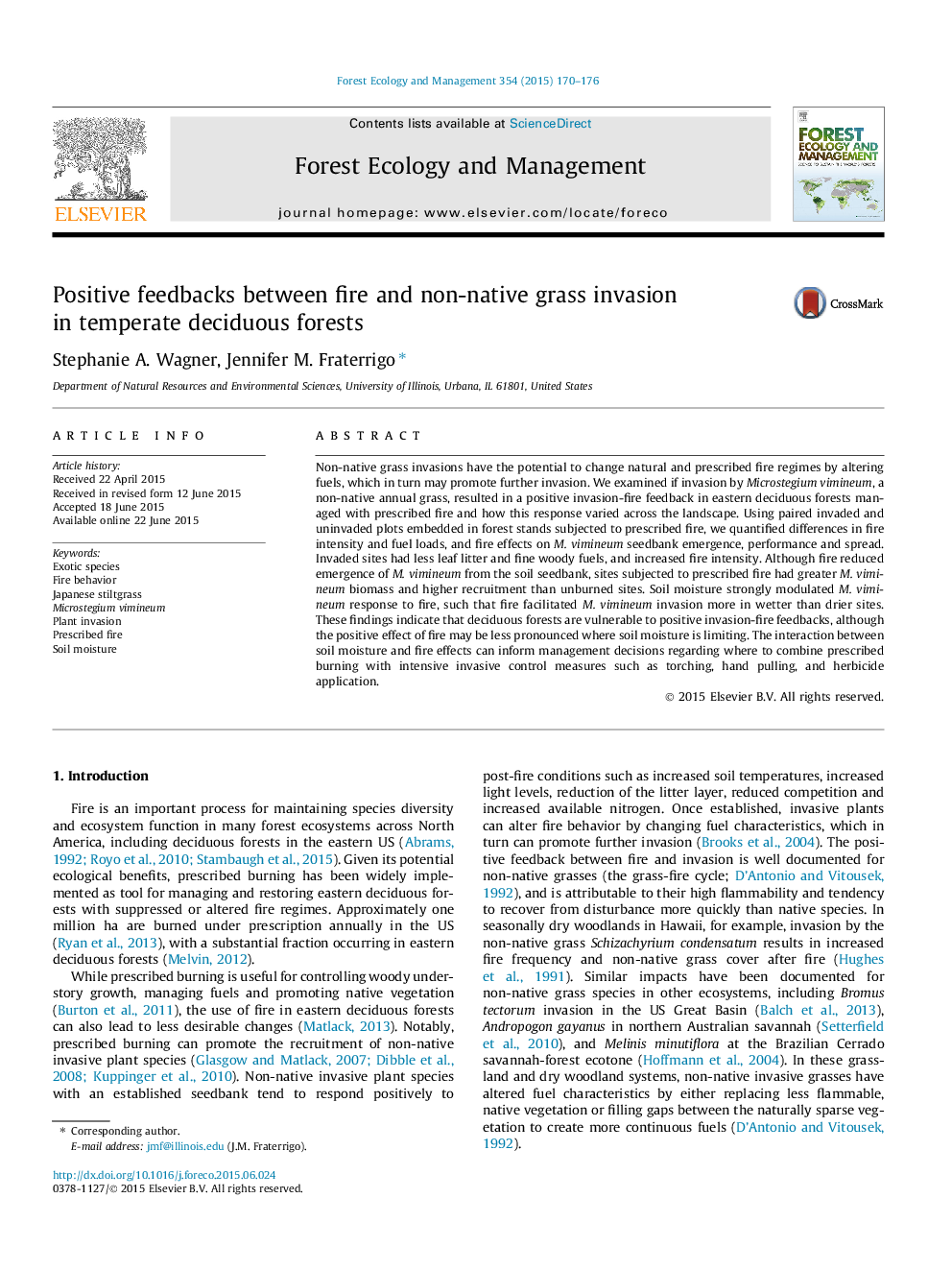| Article ID | Journal | Published Year | Pages | File Type |
|---|---|---|---|---|
| 86147 | Forest Ecology and Management | 2015 | 7 Pages |
•Biomass and recruitment of M. vimineum were greater in burned than unburned stands.•Fire intensity was greater in M. vimineum-invaded than uninvaded forest stands.•Prescribed fire slightly reduced M. vimineum emergence from the soil seedbank.•Soil moisture had a positive effect on M. vimineum performance in burned stands.
Non-native grass invasions have the potential to change natural and prescribed fire regimes by altering fuels, which in turn may promote further invasion. We examined if invasion by Microstegium vimineum, a non-native annual grass, resulted in a positive invasion-fire feedback in eastern deciduous forests managed with prescribed fire and how this response varied across the landscape. Using paired invaded and uninvaded plots embedded in forest stands subjected to prescribed fire, we quantified differences in fire intensity and fuel loads, and fire effects on M. vimineum seedbank emergence, performance and spread. Invaded sites had less leaf litter and fine woody fuels, and increased fire intensity. Although fire reduced emergence of M. vimineum from the soil seedbank, sites subjected to prescribed fire had greater M. vimineum biomass and higher recruitment than unburned sites. Soil moisture strongly modulated M. vimineum response to fire, such that fire facilitated M. vimineum invasion more in wetter than drier sites. These findings indicate that deciduous forests are vulnerable to positive invasion-fire feedbacks, although the positive effect of fire may be less pronounced where soil moisture is limiting. The interaction between soil moisture and fire effects can inform management decisions regarding where to combine prescribed burning with intensive invasive control measures such as torching, hand pulling, and herbicide application.
